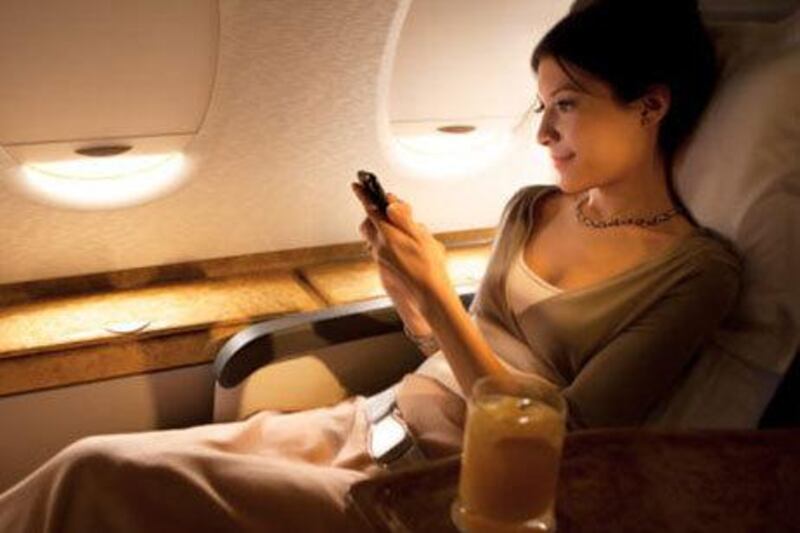“Please turn off and stow all electronic devices.”
For flight passengers, this announcement can be a cringe-worthy reminder, whether they are using an Apple iPad, Amazon Kindle e-reader or BlackBerry smartphone.
But is the announcement really all necessary to begin with?
Some say the argument that using a mobile phone, tablet or other electronic device can interfere with aircraft controls is an unproven idea.
As Nick Bilton of The New York Times has reported, an annual report issued by Nasa last year found no cases involving the use of electronic gadgets on planes “have produced scientific evidence that a device can harm a plane’s operation”.
“Reports of such interference have been purely speculation by pilots about the cause of a problem,” Mr Bilton wrote.
In some carriers’ planes, pilots are allowed to bring their own tablet computers into a cockpit rather than relying on hardcopy, print-based flight manuals.
In June, JetBlue Airways in the United States announced was giving all 2,500 of its pilots fourth-generation, 16 gigabyte, Wi-Fi capable iPads.
“While JetBlue has been approved for a decade to use a PC-based laptop in the cockpit-called an Electronic Flight Bag-the iPads will offer new capabilities and conveniences, especially as JetBlue implements Ka-Band satellite Wi-Fi,” the airline said.
Emirates Airline, meanwhile, said this month its OnAir Wi-Fi service would let passengers connect to the internet while in flight. The cost runs US$2.75 for smartphones and $7.50 for tablets or laptops. Certain flights on its fleet of A380 planes also offer mobile phone use, as well as data roaming.
Too bad passengers travelling on other international flights can’t always enjoy those same capabilities and conveniences.
Four in 10 passengers surveyed in the US this year said they would like to use their devices during all phases of a flight, including takeoff and landing. Moreover, almost one-third of passengers –30 per cent – reported having accidently left a personal electronic device switched on during a flight, according to the survey jointly released by the Consumer Electronics Association and the Airline Passenger Experience Association.
If this were the case, and devices were left powered on, would there not be numerous reports of flights that had ran into some sort of issue due to our growing personal army of portable technology?
In June, the US Federal aviation administration (FAA), a government agency that oversees national aviation, said it “recognises consumers are intensely interested in the use of personal electronics aboard aircraft; that is why we tasked a government-industry group to examine the safety issues and the feasibility of changing the current restrictions.”
This industry group has made recommendations to ease restrictions but the FAA has yet to make a ruling.
Meanwhile, some passengers on airlines in other countries are continuing to travel as usual-with their gadgets left on.
“In many other countries, the rules are less strict [than in the US],” says Russell Lemieux, the executive director for Apex, a group that represents a network of airlines and industry suppliers.
“For example, cell phone use is possible on a number of carriers overseas.”
Emirates, with its OnAir service, has the last word.
“If that’s not enough, every seat on board the Emirates A380 has a satellite telephone and onscreen email/SMS services,” it says.
For now, anyway, that might just be enough.
business@thenational.ae





